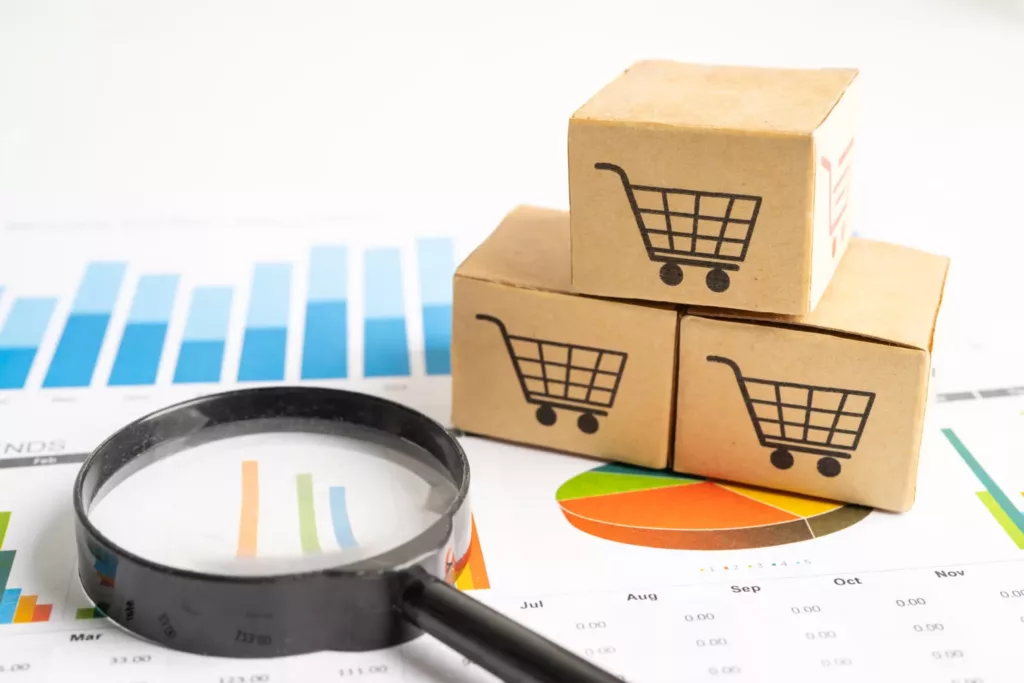This article aims to unravel Amazon BSR’s complexities, drawing insights from authoritative sources. We will explore its mechanics, significance, and strategies for sellers to estimate and enhance sales. Combining information from three reputable articles gives us a holistic understanding of the subject.
Unveiling Amazon Best Seller Rank
Amazon’s Best Seller Rank (BSR) is a dynamic metric that shows how well a product sells compared to others in its category. Updated frequently, it affects the Best Sellers list, giving a real-time view of a product’s popularity. The Best Seller Badge goes to the top product in a category, and lower BSRs mean better sales.
BSR is specific to categories, based on recent and overall sales, ignoring page views or reviews. A product can have multiple BSRs in different categories, and rankings may vary on different Amazon stores.
In simple terms, higher sales mean a lower BSR. For example, a product ranked #1 sells much more than one at #200,000. But remember, BSR only compares a product to others in its category and doesn’t give a universal ranking for all products on Amazon, as items can be in multiple categories.
Distinguishing BSR from Search Ranking
BSR reflects a product’s sales within a specific category, while search ranking is influenced by SEO practices. Despite a high BSR, a product may not secure a high organic search ranking. Both metrics, however, are linked to sales volume, with well-selling products enjoying higher positions in both BSR and organic search.
Proven Strategies to Boost BSR
Elevating sales is the linchpin for improving BSR. Sellers can deploy the following tactics:
Category Selection: Meticulously choose the product category, as BSR is relative to competitors within the same category.
Optimized Listings: Enhance visibility through SEO practices, A/B testing, A+ Content, and other optimization techniques.
Competitive Pricing: Conduct pricing research and experiment to find the optimal price points for increased sales.
Strategic Marketing: Leverage various marketing methods such as social media, blogging, and Amazon’s advertising options.
Customer Engagement: Cultivate strong customer relationships through exceptional service, follow-ups, and encouraging positive reviews.
Estimating Sales Using BSR
BSR serves as a potent tool to gauge a product’s sales frequency on Amazon. A lower BSR correlates with higher sales, and understanding BSR trends over time provides valuable insights into a product’s performance. Tools like Aiumia’s Sales Estimator or Market Radar offer efficient ways to calculate BSRs and estimate sales. By harnessing the power of machine learning regression models to map BSR to sales, these tools provide accurate and real-time sales estimates, enabling sellers to optimize their strategies, stay competitive, and achieve sustainable growth on the Amazon platform.
A Deep Dive into Amazon Best Sellers Rank
Examining the Amazon BSR algorithm reveals its intricacies. BSR updates swiftly within 2-3 hours of a sale, new items without sales lack a BSR, and variations can have their own or roll up to the parent ASIN. The sensitivity of BSR to sales velocity is evident, with fluctuations occurring rapidly and often dramatically.
Significance of BSR for Sellers
BSR serves as a reference point for a product’s success and popularity within a category. Monitoring BSR over time unveils performance trends, aids inventory management, and informs decision-making. It mirrors the impact of changes in pricing, promotions, and listing optimization.
Factors Influencing BSR
Four pivotal factors impact a product’s Amazon BSR:
Sales History and Velocity: Consistent sales and competitive pricing contribute to a favorable BSR.
Stock Availability: Inventory management is critical to maintaining stock availability and preventing a negative impact on BSR.
Seasonal Trends: Seasonal variations can influence BSR, particularly for products with peak-demand periods.
Price and Promotions: Competitive pricing and promotions influence customer purchases, indirectly impacting BSR.
Proactive Strategies to Enhance BSR:
Sellers can implement actionable steps to improve BSR:
Optimized Product Listings: Maximize keywords, utilize high-quality images, and provide compelling copy for an optimized listing.
Inventory Monitoring: Avoid out-of-stock situations by closely monitoring inventory levels.
Effective Review Generation: Authentic reviews positively impact BSR; focus on generating positive reviews and managing customer feedback.
Competitive Pricing: Keep an eye on competitors, offer enticing deals, and leverage tools like Competitor Intelligence.
Limitations of BSR
While valuable, BSR has limitations. It is primarily a backward-looking metric that doesn’t guarantee future sales. Rapid and context-lacking fluctuations make a single BSR at a given moment less informative. Long-term optimization for sales is recommended over a short-term focus on BSR.
A nuanced understanding and effective utilization of Amazon Best Seller Rank can significantly influence a seller’s success. By demystifying BSR, sellers can make informed decisions, optimize strategies for long-term sales, and navigate the complexities of Amazon’s dynamic marketplace. Armed with the right tools and insights, sellers can leverage BSR to propel their products to the top of Amazon’s charts.








